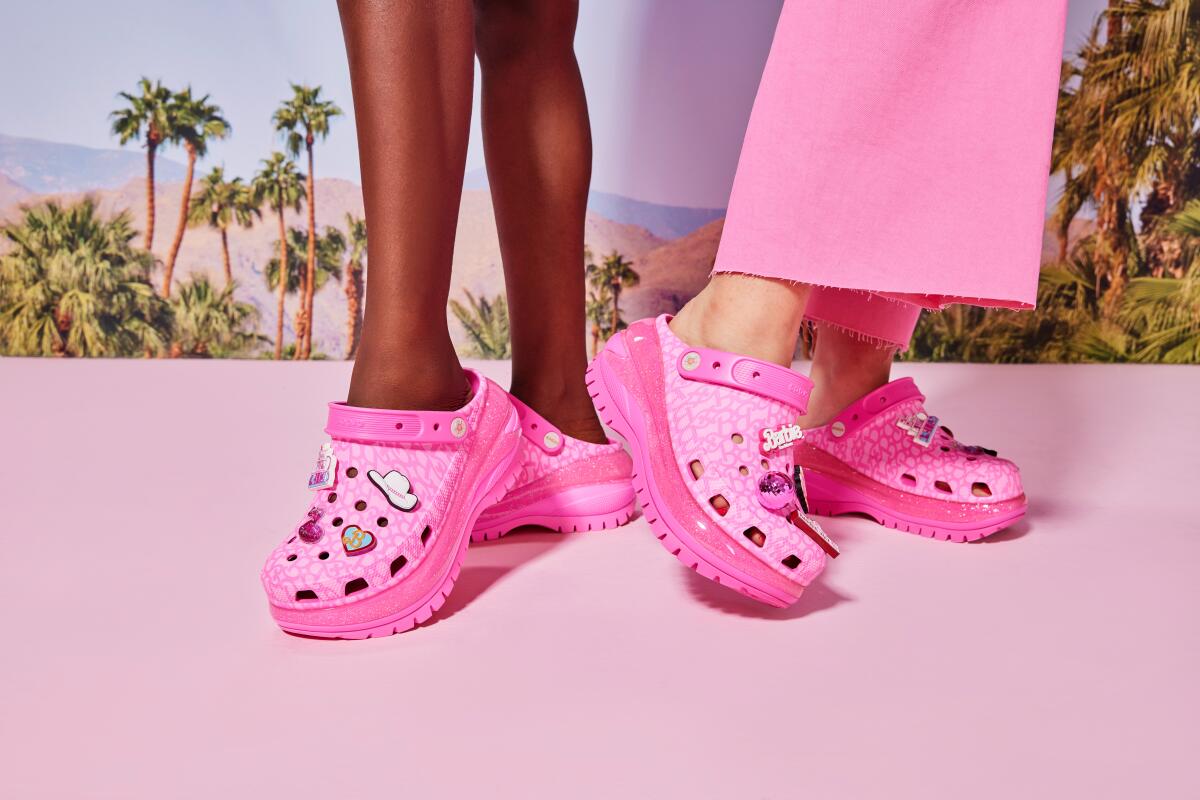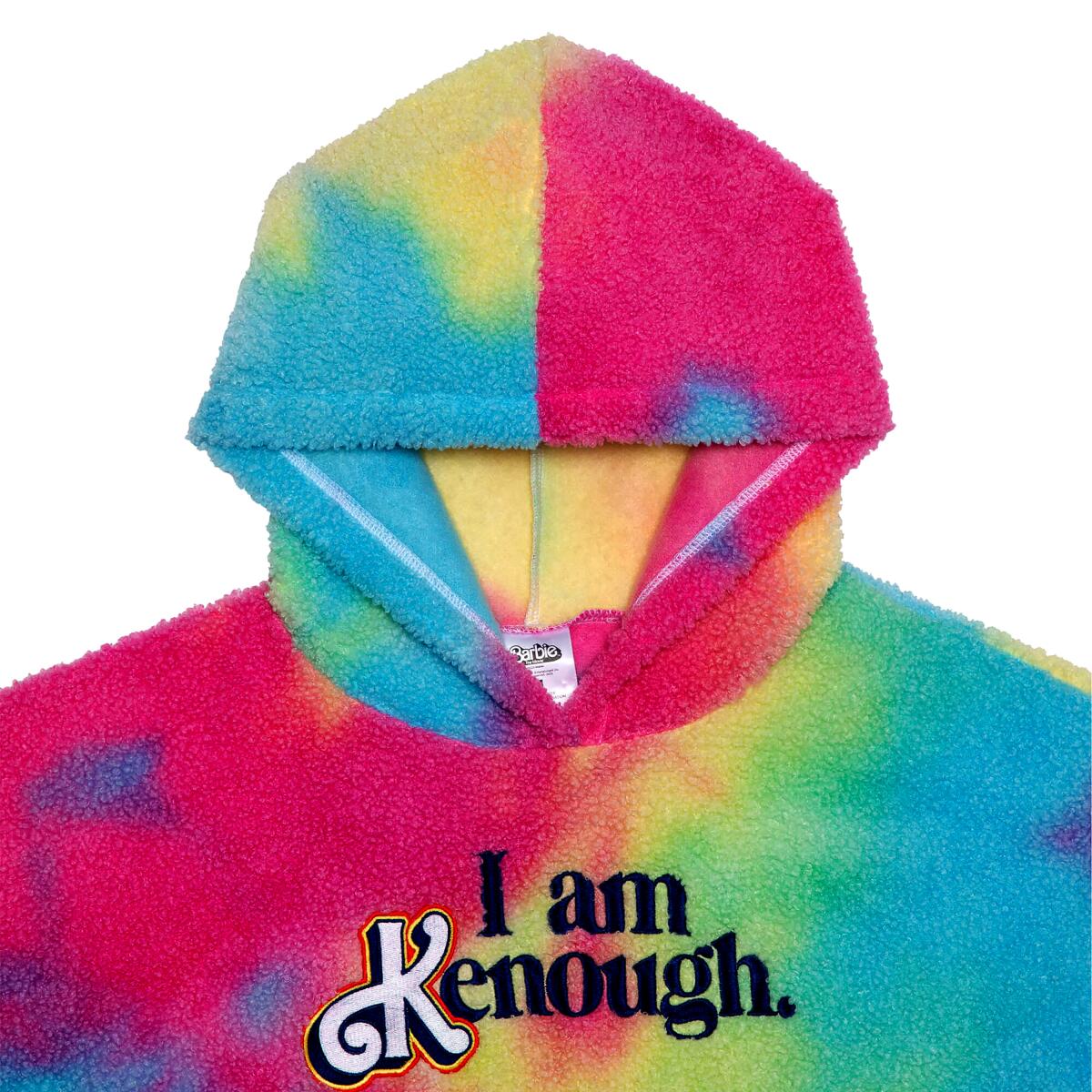Sign up for The Envelope
Get exclusive awards season news, in-depth interviews and columnist Glenn Whipp’s must-read analysis straight to your inbox.
You may occasionally receive promotional content from the Los Angeles Times.

More than a year before it was released, the “Barbie” movie reached beyond mere anticipation for a summer blockbuster. The eagerness to see Margot Robbie realized as Barbie and Ryan Gosling as Ken became something more like hot-pink fever.
In those innocent months before the movie’s release in July, some expected the film to be a feature-length product placement opportunity for Mattel. Some thought it would be a fun, nostalgic romp through Barbie lore. It was — and so much more. Director Greta Gerwig also delivered a visually and thematically vivid story about the social pressures on women, men and children.
The playful and pink side of the movie has been neatly packaged into a reported $150 million marketing campaign that Mattel said included nearly 165 collaborators. Fans bought Barbie-themed designer shoes and pink Birkenstocks, ate Barbie ice cream and exercised with Barbie inline skates. The film’s ‘90s style also inspired a Barbiecore fashion trend that’s still going strong. Barbie and Ken costumes were among the top looks for this year’s “Barbieween.”

With $1.4 billion in global box office receipts, “Barbie” is the highest grossing film for a solo female director, for Warner Bros., for 2023, and, so far, the 14th highest-grossing film ever. The undeniable financial success of Gerwig’s film is all the more remarkable because it’s not a franchise and its main audience is female.
That commercial triumph would not have been possible without a story that resonated with women. The film explores women’s struggles with appearance, toxic masculinity and the tough road to empowerment. More remarkably, the message of gender equality and women’s rights came not in a documentary, biopic or earnest, low-budget indie, but in a big-budget studio film for a children’s toy that has been unpopular and even controversial at times. Even before the film hit theaters, its creators hinted that it would explore the conflicting emotions generations have had with the doll and her unrealistic standard of beauty. The trailer promised that “if you love Barbie,” and “if you hate Barbie,” then “this movie is for you.”
Greta Gerwig’s ‘Barbie’ movie starring Margot Robbie and Ryan Gosling is expected to be one of the summer’s biggest hits. Here’s what you need to know about the film.
For those put off by Stereotypical Barbie’s straight blond hair, white skin and impossible figure, the film brings them up to date on Mattel’s wider Barbie world, said Rebecca Hains, a professor of media and communication at Salem State University in Massachusetts. Robbie, as Stereotypical Barbie, still represents a Caucasian beauty ideal, but she has company, which may be news for anyone who hasn’t bought dolls in decades.
“The film expanded the general idea of what Barbie looks like and what Barbie can be,” said Hains. In the movie, Barbie has a range of skin tones, body shapes and hair colors and textures. Representation matters in the media, yet even the pretty blond Barbie wasn’t immune to societal pressures.
Gerwig’s story also challenges viewers to change how we see Barbie and to put her in context.
“It was very skillful on the film’s part to address all of the feminist criticism of Barbie and say that the problem isn’t with Barbie, but what the real world brings to Barbie,” Hains said.
“Barbie” may be pretty in pink, but it also explores the ongoing and complex ideals of feminism and how they exist within a male-oriented society.

The “Barbie” movie exposes the many assumptions of patriarchy but also didn’t reject men outright, according to Vanessa Schwartz, a USC history professor who researches film and entertainment. It showed, she said, that “it is time for men to accept their role, which is not the patriarchal privilege, but to accept that not everything about women is made for them.”
Far from bashing men, as some critics have suggested, the movie offers a kind of healing moment, according to Schwartz: “It is the idea that you can destroy patriarchy without getting rid of men.”
Notably, the female-centric film, like the Barbie doll, isn’t structured around finding a man. Barbies were never marketed as wives or mothers, and “Barbie” skips the usual marriage plot, Schwartz said.
Mattel and Gerwig were able to tell the story of Barbie, the doll, and show how she has represented many things to many generations of women and children, all without being a subservient bride. She’s long been a significant role model for a kind of successful, independent, career-focused woman too.
Our BuzzMeter film experts are back to predict what Oscar voters will nominate in 10 Academy Awards categories. Vote in the online polls!
In a novel observation, Schwartz compares Barbie to Taylor Swift, both of whom proved this summer that women are a powerful economic force.
“The real-life Barbie is Taylor Swift,” Schwartz said. “First, they are both blond and beautiful.” Second, the two icons want to be taken seriously. Schwartz noted a quote from Swift that could as easily be from modern Barbie: “I want to wear pink and tell you what I feel about politics.”
The “Barbie” movie may have nudged us closer to a comfortable relationship with feminism and men, but there’s no guarantee it also will bring more women’s stories told by women.
“I think Hollywood’s attention span is very short,” said Tara McPherson, a professor of cinema and media studies at USC. “There may be a few doors opening for Greta Gerwig and for women with a good Barbie pitch. That door won’t stay open very long.”
The scholars all noted how successful female-centric films and television shows raise hopes for more roles for women behind the camera, but, inevitably, those hopes tend to fade away.
One message remains true, however, according to M.G. Lord, a USC associate professor of English and the author of the 1994 “Forever Barbie: The Unauthorized Biography of a Real Doll.”
“All the key players in the creation of the doll were women,” Lord said, quoting her book, which will be reissued. “She was a doll invented by women for women to teach women, for better, sometimes worse, what was expected of them by society.”
Sign up for The Envelope
Get exclusive awards season news, in-depth interviews and columnist Glenn Whipp’s must-read analysis straight to your inbox.
You may occasionally receive promotional content from the Los Angeles Times.